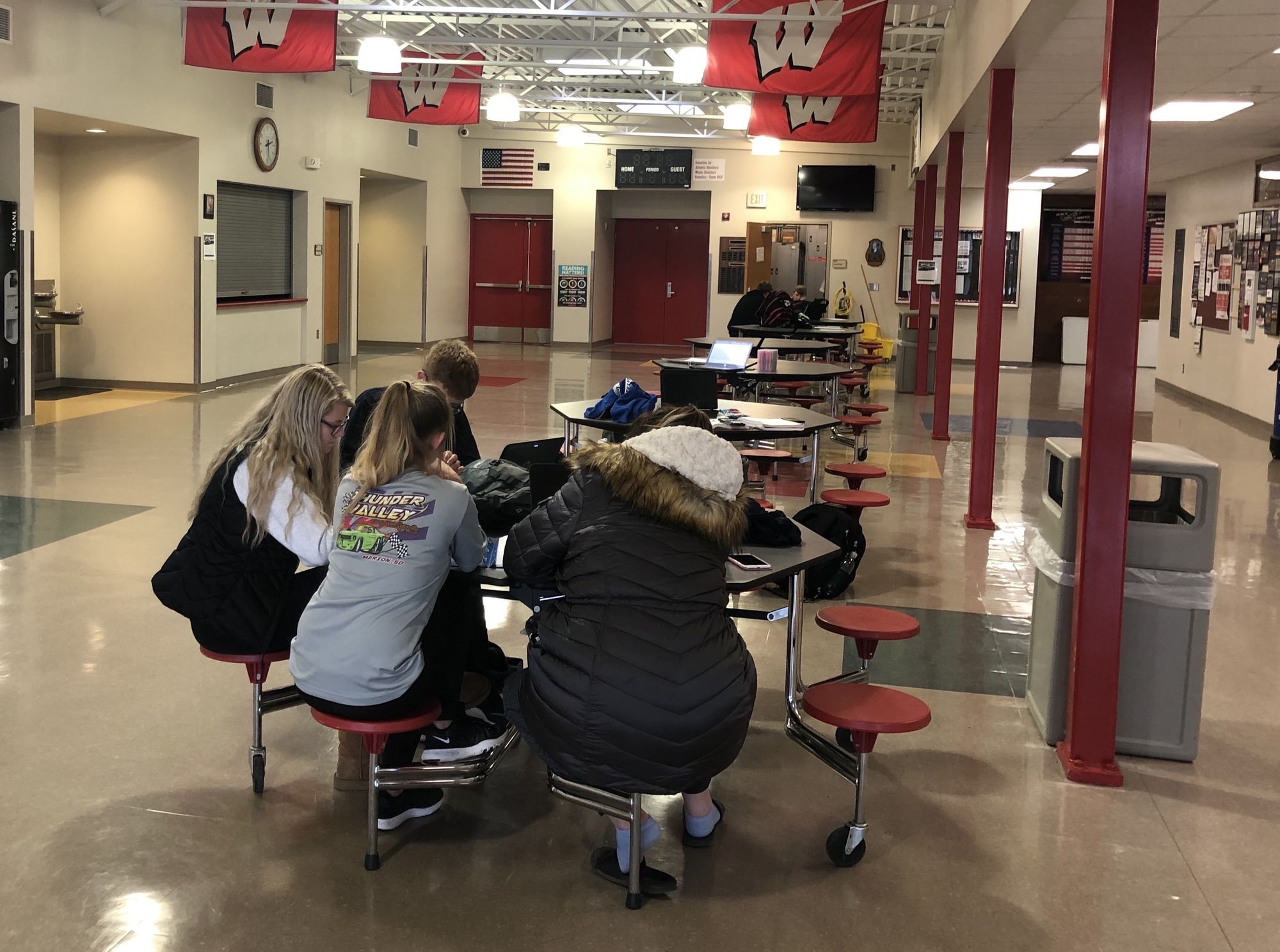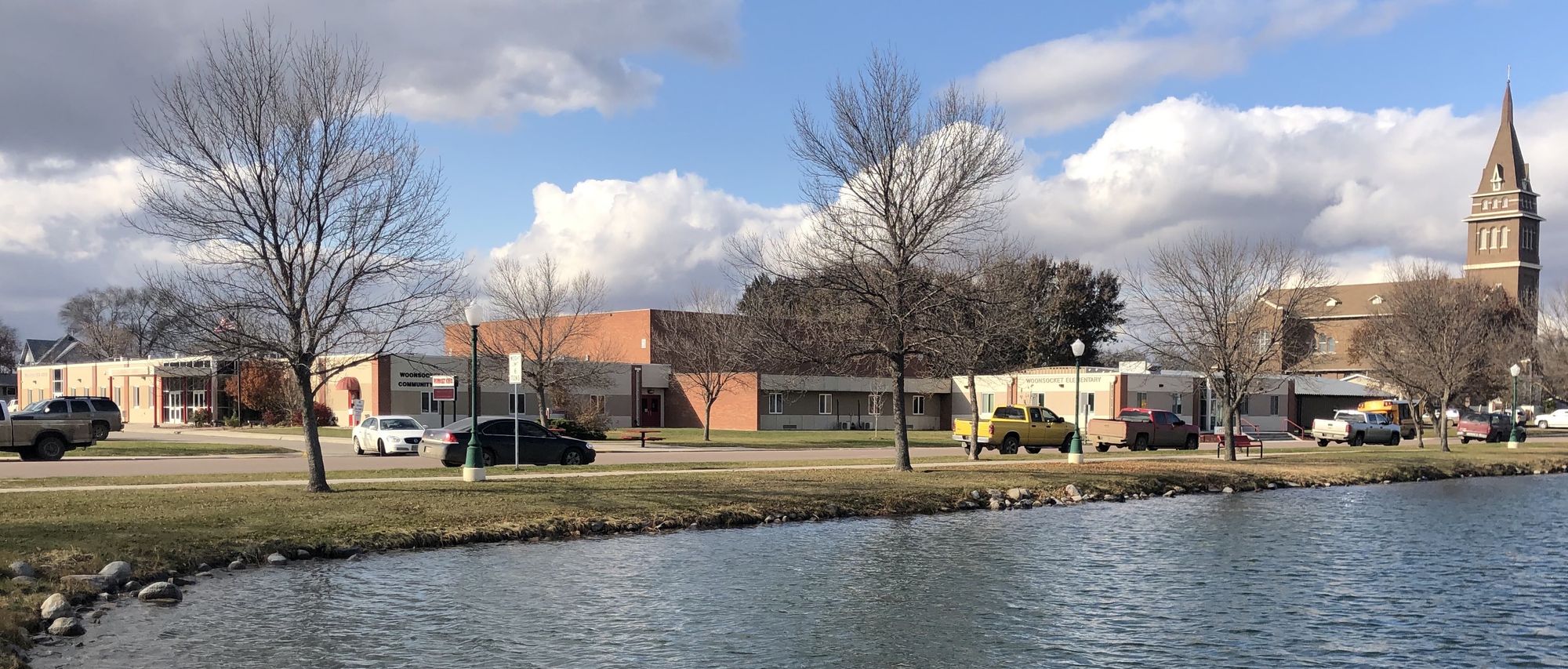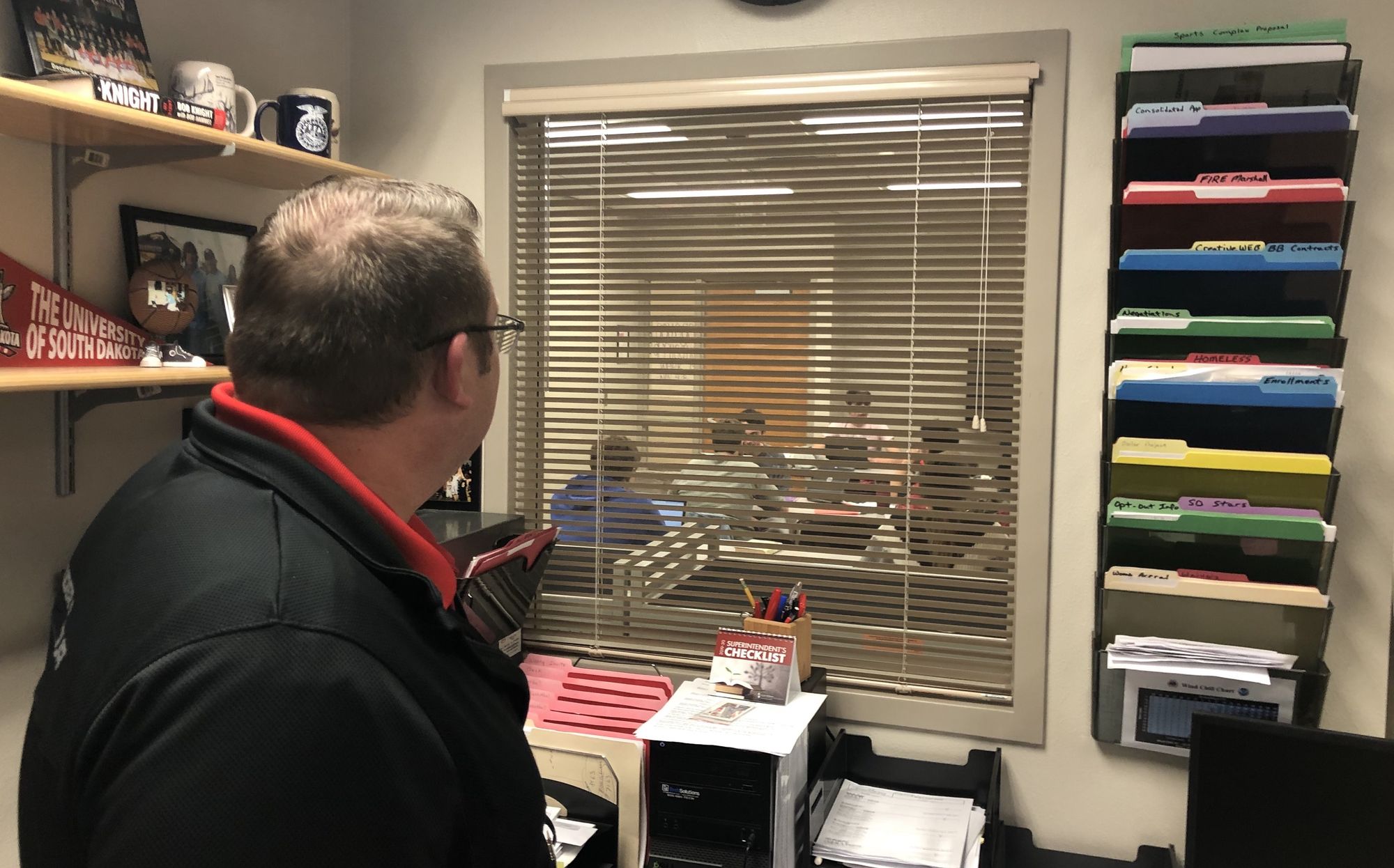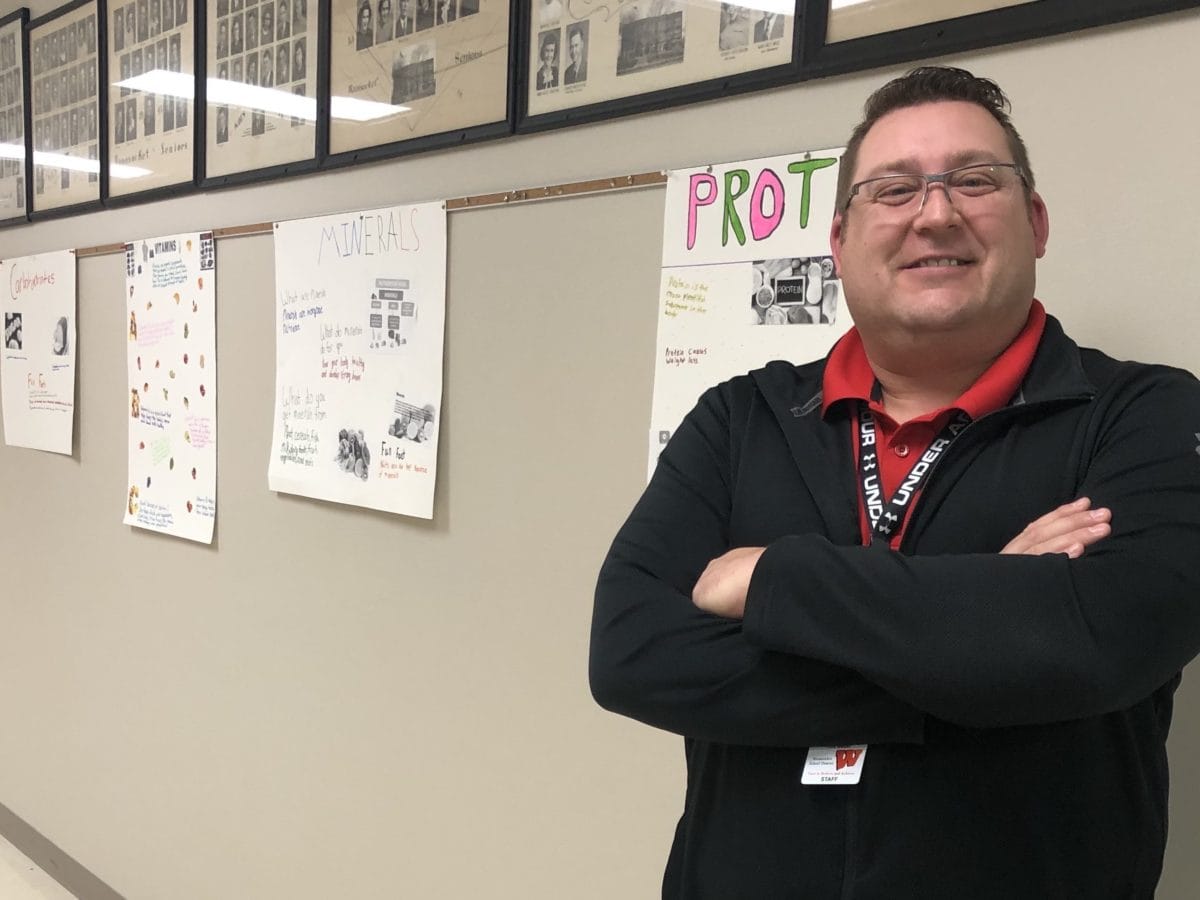WOONSOCKET, S.D. – Small, rural school systems in South Dakota and across the country face sometimes daunting challenges in providing a strong education to students.
Limited funding, difficulty in hiring and retaining good teachers, remoteness and transportation challenges, high poverty rates among students and reduced access to college-preparatory courses can all hamper learning in small, isolated school districts.
South Dakota is one of the most rural states in the nation when it comes to public education, with the vast majority of school districts located in rural areas and with 40% of students statewide attending rural schools.
Rural educators often tout the generally lower student-teacher ratios and close relationships formed between students and staffs, and scores on standardized tests show that students in some rural South Dakota districts match and occasionally outperform their urban peers.
But a new national study of small, rural school systems ranked South Dakota as fifth-highest in the nation in terms of challenges faced and need for improvement.
The study by the Rural School and Community Trust, titled “Why Rural Matters 2018-19,” used census information and data from the U.S. Department of Education and other sources in an attempt to shine a light on the need for states to focus more attention on and provide greater funding to rural schools.
“We do this study because rural schools and communities really matter to our nation, and they’re often forgotten,” said Alan Richard, a spokesman for the Rural School and Community Trust. “The financial and logistical challenges that rural schools face are really immense.”
The study found that nationally, nearly one in six rural students lives in poverty, that one in seven qualifies for special education and that one in nine rural students has moved in the past year. All of those factors put rural students at risk of falling behind or not graduating.
A high student-mobility rate is one of the factors hampering rural education in South Dakota, the study found. Researchers also said South Dakota is one of only seven states that decreased funding for rural schools in recent years, and that the state has a high rate of students living in poverty.
The study also pointed out that about one in six rural students in South Dakota fails to graduate high school, and that less than 4% of those who do graduate have passed an Advanced Placement course, which can qualify them for college credit or enhance their ability to get into universities.
Rural educators in South Dakota acknowledge that they face many of the challenges highlighted by the rural school study. They sometimes struggle to find, hire and retain highly qualified teachers, to reach students in poverty and to fully prepare students for college.
But Amy Ferley, superintendent of the Edgemont School District in far southwestern South Dakota, said there are intangible benefits to a rural education that may not show up in statistics or in standardized-test results.
In the remote Edgemont district, teachers and administrators are able to form close relationships with students and their parents that allow for more individualized learning.
“We have 160 kids, so we know their names and their siblings’ names and their parents’ names and probably their dogs’ names,” Ferley said. “We’re trying to meet those kids at an individual level because it takes a special relationship between teachers and students to understand what kids need, and what they don’t, and how they shine in different areas.”
Those close relationships — and strong support from the local community — help offset some of the funding, staffing and logistical challenges faced by small districts, said Rod Weber, superintendent of the Woonsocket School District in east-central South Dakota.
“I credit our school for having a staff that makes our school the best in the area,” he said. “A lot of it also has to do with what our community has done to support the schools and make a lot of improvements to make it a viable place to live for young families.”
Research highlights rural school issues
Recent research in South Dakota and nationally backs up many of the conclusions of the Rural School and Community Trust study.
A 2017 study of the South Dakota teacher workforce by the Rockefeller Institute of Government highlighted some of the challenges faced by small, rural districts. Across the state, the study found that the student population increased at double the rate of hiring of new teachers from 2006-2016. The study also found that teacher turnover was higher in rural districts compared with urban school systems, and that small, rural schools had fewer experienced teachers, fewer teachers with advanced degrees and fewer certified teachers than in larger urban districts.
A 2018 study by the Center for Public Education within the National School Boards Association found that rural schools are often left out of critical policy discussions and are therefore less likely to be the target of state efforts at reform, improvement or funding increases.
The study found that, counter to conventional wisdom, child poverty exists at a higher rate in rural counties (64%) compared with urban areas (47%) and tends to be more persistent and experienced more deeply than in urban areas, where more public resources may exist.

Some rural areas, such as Native American-dominated communities in South Dakota, also have much higher rates of minority students who face learning challenges related to language and poverty. Several studies have shown that schools with high minority populations undergo the highest rates of teacher turnover.
The CPE study also found that rural districts in America receive only 17% of total education funding, even though roughly half of school districts in the country are considered rural, and that more than 20% of students attend rural schools.
The study concludes with the statement that, “The image many have of rural America — pristine, idyllic and untouched by modern problems — is obviously outdated.” The study urges educators and policymakers to ensure that rural schools are given greater focus in terms of study, discussion and efforts at improvement.
The “Why Rural Matters” schools study placed South Dakota well above other Great Plains states in terms of needing improvement in its rural schools. According to the study, South Dakota ranked fifth in highest priority for improvement, compared to 21st for North Dakota, 28th for Montana, 30th for Minnesota, 36th for Nebraska and 42nd for Wyoming.
Funding limits heighten challenges
Insufficient funding — a challenge also faced by South Dakota’s larger school districts — exacerbates many issues that arise in rural schools, educators and researchers said.
Research has consistently shown that while increasing teacher pay may or may not improve learning, improved funding of education overall has a positive impact on learning.
“Unfortunately, the lower investment states make in their rural schools and student achievement often correlate,” said Richard. “It just makes sense because if you don’t have the same resources as other schools, you’re going to struggle to find, keep and support the educators you need, and you will struggle to support the same educational programs that urban schools will have.”
Like many states, South Dakota funds its public school system through a combination of direct state funding and local property-tax collections, which have a maximum cap set by the state.
General school funding has risen only slightly in recent years in South Dakota. Education did get a boost in the state starting in 2016, when a .5% hike in the state sales tax began generating about $67 million a year in new revenue for education, though the vast majority went toward raising teacher salaries out of last place in the nation.

Allen Pratt, executive director of the National Rural Education Association, said some states have aided small-population or rural school districts by creating a special funding stipend based on school population and need. States could also alter per-student funding formulas to account for funding shortfalls in rural districts with small student counts or low local property-tax bases.
“If you take the Dakotas and other states that are really high in rural population, there needs to be a shift or an adjustment to help fund those rural schools to level the playing field,” Pratt said.
South Dakota does have a special allocation available to “sparse” rural school districts that are taxing local properties at the maximum level and still show a need for more funding, though the payment tops out at $110,000 per district.
The high need for additional funding among South Dakota school systems is evidenced by the high number of districts that have enacted so-called “opt outs,” in which local school boards agree by vote or a community referendum to tax local properties at a higher rate than the state allows to raise new money for education.
In 2018, about 45% of the state’s 149 school districts — many of them rural in nature — had an opt-out in place to generate more tax revenues for education.
Another option for rural states is to enact programs or policies that create “wraparound” services, or those that engage state agencies to work both in communities and in schools, Pratt said. For example, a mental-health counselor who works for a state agency in a small town could schedule visits to the local school to help students who are struggling, thereby helping the school avoid hiring its own counselor. The same arrangement could provide help to students with drug and alcohol problems or even gifted students who need help to reach their full potential.
“I know there’s only one pot of money, but it’s important to find other agencies within the state that can help address the needs of the schools,” Pratt said.
Two leaders push schools forward
Weber, who has spent 17 years as superintendent in Woonsocket (population about 650), said the biggest challenge in raising the quality of education in a small district is hiring and retaining good teachers. The district tries to remain competitive with bigger neighbors in terms of pay, offering a $37,000 starting salary and a $12,000 annual benefit package.
Weber said he encourages teachers to settle in or around town and preferably buy a home as a way to increase their connection to the community. Of the 39 staff members in the system, only two live outside the district boundaries, he said.
Small districts also must work through highly shifting enrollment levels, Weber said. His district has grown by about 100 students in recent years, which is a good sign that has led to more state revenues. But fluctuations still cause stress, he said.
“In these small schools, you’re on a roller coaster for enrollment,” he said. “You might have a class of 25 kids graduate as seniors and have only eight come in as kindergarteners. At that point, you’re looking at next year’s funding being down about $85,000 to $100,000.”
Instability like that has led Woonsocket to approve several opt-outs over the years, including one that now enables the district to raise the tax levy by up to $250,000 if needed.
Like many small school administrators and teachers, Weber serves multiple roles, also working as the school principal and athletic director.
The district’s most recent state report card test results (53% proficient in English language, 40% in math and 28% in science) are all slightly below state averages (54% in English, 46% in math and 40% in science), but Weber wonders if that is only because students are ambivalent about taking standardized tests.
Weber has tried to be innovative and flexible to keep educational standards high. His school promotes college readiness by offering courses through the South Dakota Virtual School, and has a program through Northern State University to offer some dual-enrollment classes.
On a recent day, Weber walked through the high school commons where a few students were studying or quietly chatting. He pointed out that the school library was merged with the community library as a way to save money and keep both libraries open.
Late that afternoon, Weber saved the time of a classroom teacher by monitoring an upper-class study hall with a single pop-in visit and by then watching the students through a window in his office.

Overall, Weber said he feels good about the education his district is providing to students.
“I really do think we have good teachers in our small schools and we’re offering everything, all the classes, that bigger schools are,” he said.
Ferley, the superintendent in Edgemont (population about 700), agreed that developing a strong instructional staff is a challenge in small, remote districts.
Several veteran teachers in Edgemont are soon to retire, and many teachers must handle several subjects or multiple variations of a single subject. Finding specialized teachers, such as those certified in special education, is difficult for a remote district, she said. Starting teachers make $36,450 with about $7,200 in benefits for a single person.
The Edgemont schools have a relatively high rate — about 56% — of all students receiving free or reduced lunches, a common standard of low-income students. The district also sees significant transience among students, which Ferley said can make learning a challenge for students who come and go. Despite those factors, the district’s most recent standardized proficiency scores are close to the statewide averages in English (45%) and science (41%), though lower in math (33%).
While she said most teacher requests for equipment and supplies are quickly met, the district has larger logistical concerns while due to operating mostly in buildings constructed 80 to 90 years ago.
Rather than seeking opt-outs or borrowing to generate new money, she said the district has saved up to pay for major improvements in recent years, including for a new boiler and air-conditioning system.
The Edgemont district has found other innovative ways to save money. Several years ago, the district stopped running buses — which was expensive and left some students to endure extremely long bus rides — and now instead provides parents with mileage reimbursement for transporting their children.
Ferley also spoke proudly of a recent effort she said illustrated the deep commitment that the Edgemont community has to its schools. When the district needed to upgrade its sports fields, local donors provided most of the money, equipment and labor to build a sparkling new track and football complex, Ferley said.
That level of commitment, she said, can also be found within the teachers and staff who work in the district.
“The teachers here work hard and they really care, and I would put my teachers up against those in any district in the state,” Ferley said. “There is hope and we’re working really hard because we really love these kids and we want the best for them.”




